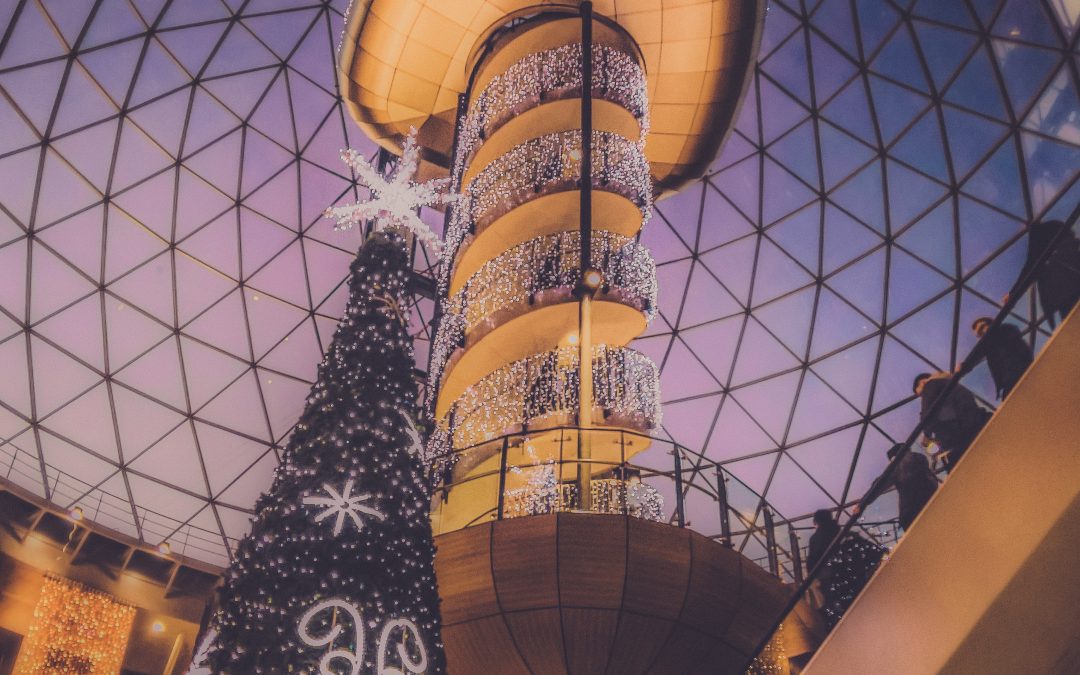After yet another decline in footfall to shopping centres over the festive period, NotLost highlight that enhancing customer experience might be the answer
The run-up to Christmas is a tantalising time in the retail industry. High street stores and shopping centres hold their breath over how they’ll perform throughout December. Rightly so; reports repeatedly show that footfall is decreasing year-on-year on the high street due to various factors.
This blog post will delve into some of the threats facing the retail industry during the festive period and why that may be. However, we’ll also outline some of the deviations from the trend. Shopping centres who value customer experience performed better than those who don’t. Putting the customer first with unique experiences and through operational changes makes a difference to footfall and therefore success.
Why has retail footfall decreased?
Since 2009, shopping centre footfall throughout December has fallen in all but one year. Thus, 2019 was no different as reports show a decline in footfall of 2.1% since last year. Some experts suggest this was due to the later timing of Black Friday during November 2019, stretching out the festive run-up almost too long.
The rise of online shopping
However, undoubtedly the rise in online shopping has a large part to play. Online shopping means customers are offered an easy alternative to heading to the shops. The appeal of free-delivery, fast click and collect options and even newly introduced buy-now-pay-later schemes are key. In the UK alone, online spend is set to increase 29.6% from 2019 to 2024, as stated by Retail Insight Network data.

Bland and boring
Simultaneously, it is fair to say brick-and-mortar shopping is getting boring and predictable.
Shoppers gain little from visiting in-store, missing out on deals and often battling against poor customer service and lack of enjoyment. Therefore, we suspect that falling customer satisfaction is one of the most poignant reasons that shoppers are turning away from in-store shopping.
However, some shopping centres are bucking the trend.
Shopping centres that broke the retail trend
It hasn’t been difficult to find two prime examples of shopping centre giants who have turned these statistics around.
Westfield London and ICON Outlet at The O2 both saw growth and increase rather than dwindling success this festive season. Surprisingly, both have adopted a strategy that puts the customer first, and it has paid off.
Westfield prioritises customer experience
Both Westfield London and Stratford City saw a rapid increase in footfall on Boxing Day, up 3.4% from last year. Both centres reported over 363,000 eager shoppers heading over to scout for deals. This was a momentous occasion for Westfield London as it marked the busiest day on record since its opening in 2008.
This was due to a strong run-up to Christmas, showcasing several festive experiences at the shopping centre. This in-turn helped build trust and confidence in the centre with customers and was the driver behind increased footfall.
Firstly, they debuted a new Christmas market, Winter Village, alongside a classic Christmas grotto.
Furthermore, Westfield also teamed up with doggy day care experts Urban Mutts to present the Merry Mutts Hotel. This ensured visitors could relax and enjoy their visit whilst their dogs were cared for, alleviating pressure. Also, the majority of retailers ran events from arts and crafts to face painting, ensuring a positive experience for all, both in-store and around the area.
Offering customers a unique shopping experience built both customer confidence and dedication.
ICON Outlet sees record sales
As a fairly fresh, new shopping centre that opened in late 2018, ICON Outlet is truly making its mark. The appeal of luxury shopping and premium brands was supplemented by festive specials for customers. Live music and a free on-site wrapping service were big hits. Furthermore, ICON Outlet offered the option to safely store new purchases if shoppers were heading to see a show at The O2.
Both venues ensured customer experience was at the forefront of all their operations.
How did these shopping centres break the trend?
PwC’s annual Christmas Predictions for 2019 noted that the success of big destination shopping centres lies in combining retail with leisure attractions to offer a complete day out. The report highlights both Westfield shopping centres as prime examples of success.
“Consumers still want a reason to go shopping and many still love the excuse to shop, especially in the festive season. Understanding what consumers want – and being able to execute that – is critical for high street success.”
PwC Christmas Predictions 2019
However, shopping centres must manage this all year round, not just at peak times for retail. For example, relying on festive markets to increase footfall works during a small period by driving pedestrian numbers. However, research shows markets do little to raise the footfall at any time of the year, plus they fail to stop the year-on-year overall decline in footfall in December.
How to improve customer experience in retail
As part of research from The Boston Consulting Group in 2017 into consumer value in retail, BCG outlined how traditional retailers could counter the online threat. The main conclusion from this was that store experience should be a point of differentiation. In order for customers to feel fulfilled, convenience is key. Furthermore, they state that reducing operational costs to fund new initiatives (in digital, pricing, and more) was where they can gain an edge.
Undoubtedly, harnessing new technology to ensure customer fulfilment is reached is a positive step.

Improving customer experience with technology
One example of implementing a new digital initiative could be introducing a cloud-based lost and found software. Using a digital system that shreds the time spent handling lost property by up to 80% ensures team members are able to spend more time on other value adding tasks.
Both Westfield and ICON Outlet use NotLost. Westfield London now save between 14-18 hours of staff time in a typical week. Gone are the days of customer complaints about lost property. Automated emails keep guests informed of the whereabouts of their lost items. Plus, the use of images to support validation makes for a modern and seamless experience for guests. The implementation of our innovative system has also enabled an efficient process for cataloguing, auditing, returning and disposing of items.
For full details of NotLost’s success story with Westfield, check out our case study.
Of course, the introduction of innovative technology such as NotLost may not be the sole reason for a boost in festive sales and footfall. However, retail organisations with a progressive culture, who value their staff and allow them to work to the best of their abilities, are the organisations seeing most improvements.
Could other shopping centres be learning how to boost footfall from this?
If we’ve sparked your interest and you think NotLost could be the answer to your lost and found problems, feel free to get in touch, we’d love to hear from you!
To find out more about NotLost, check out our About Us section, as well as our Twitter or LinkedIn. Or, explore our case studies from different industries to get a real feel for how we work.

